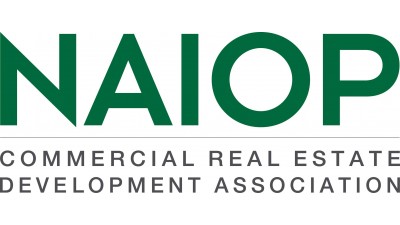Where Is Core Pricing For Industrial?

The coronavirus pandemic has shaken real estate. While it is still too early to gauge the full impact of the coronavirus, anecdotal evidence suggests that prices are dropping across asset classes, and plummeting in the hospitality and retail markets.
But one asset class looks like it may come out of the pandemic virtually unscathed.
Industrial assets, especially those within core logistics submarkets like coastal ports and transcontinental rail hubs, have barely seen any kind of dent in their pricing, according to the investors who are actively hunting out assets to buy.
“Industrial has never been glamorous, but it’s a steady performer through the business cycles,” said Jim Clewlow, chief investment officer at CenterPoint Properties, an industrial investor that operates 60M SF of industrial space. “Even with the e-commerce surge, it’s the low volatility that makes this an attractive place to be right now.”
Clewlow said that pricing has remained rock-steady in the nine super-core markets where CenterPoint operates, which include the ports of Los Angeles and New Jersey and the railyards of Chicago, places where millions of shipping containers are shuttled each year.
Nationally, Clewlow said, pricing in core markets took between a 1% or 2% hit in the last few months, but has recovered to where it was had been prior to the coronavirus pandemic. A few highly desirable urban infill locations have even possibly seen a boost to their value since the pandemic began, Clewlow said, thanks to the increased reliance on e-commerce delivery and logistics as a result of stay-at-home orders.
Perhaps as significantly, CenterPoint’s owner, a state pension system, has given Clewlow and his team an almost identical mandate to purchase and develop industrial properties in Q3 2020 as he had in Q3 2019. CenterPoint deployed $1.5B in nine markets in 2019, and Clewlow said he expects to deploy a very similar amount of capital this year.
As the economic crisis continues, there may be winners and losers in the industrial world; Clewlow expects a growing spread in cap rates between assets in highly desirable locations and less desirable assets. But he stressed that the news was good for almost any industrial owner in the U.S.

In terms of where industrial investors like CenterPoint are looking to make acquisitions, location still reigns supreme as the deciding factor. Clewlow pointed to a recent acquisition of a 1.6M SF industrial facility on 100 acres of land at the intersection of Interstates 10 and 15 in Ontario, California.
“When you're entering the Inland Empire, this is the first stop,” Clewlow said. “It’s impossible to replicate this location.”
Many of the most attractive industrial assets that have hit the market in the last few decades have been spaces formerly taken up by retailers, Clewlow said. Companies like Sears and JCPenney have huge logistics footprints across the country, and as the pandemic accelerates the evolution of brick-and-mortar retail, Clewlow expects even more of these kinds of assets to surface.
With many small businesses folding across the country, some experts have expressed concern that industrial demand could crater in national markets if local distributors and manufacturers go bankrupt. Clewlow was less concerned, however.
“Turnover is a constant, even outside of economic crises,” he said. “Tenants are always coming in and out of the market. What makes a good investor is being able to follow what users are doing: keeping your finger on the pulse of who is growing and who is downsizing, looking years out in advance.”
E-commerce and logistics giants are also gobbling up enough space in many markets to make up for losses of smaller businesses, Clewlow said, citing a statistic he received from CBRE that Amazon alone is leasing 2M SF of industrial space per week.
Many real estate deals are on hold since investors and owners alike do not have enough information on the impact of the coronavirus to underwrite growth or demand projections for the coming year. But Clewlow said long-term industrial buyers aren’t seeing the same kind of data drought.
“We feel like we can handicap appropriately for various outcomes,” Clewlow said. “We have over three decades of cumulative knowledge from tenants, our portfolio and other people’s portfolios. And we’ve been through downturns before. We know how they alter the landscape.”
Jim Clewlow will share more at NAIOP’s CRE.Converge Virtual conference, presented online Oct. 7-8, on a panel exploring what core investors are looking for and how they evaluate deals. Register here for the event.
This feature was produced in collaboration between the Bisnow Branded Content Studio and NAIOP. Bisnow news staff was not involved in the production of this content.

